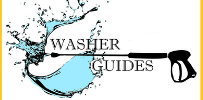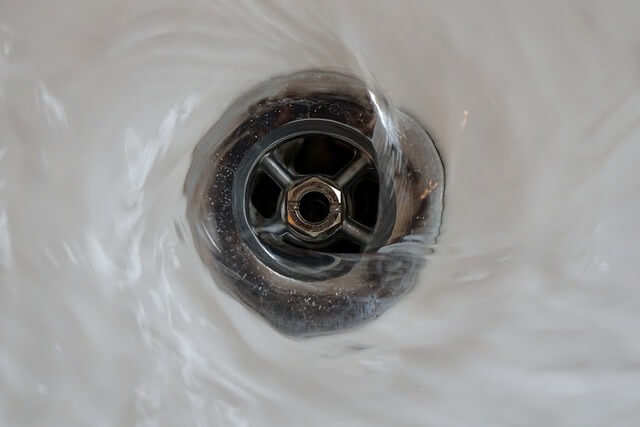If your drain is slow or backed up, you may be wondering if you can use a pressure washer to unclog it. The answer is yes, but there are some things you need to know before you get started. First of all, make sure that the pressure washer you’re using is rated for drains. If it’s not, it could damage your pipes. Here is you can see the guidelines step by step
- Just make sure that the pressure washer is set to a low setting
- Put on some gloves and safety goggles
- Point the pressure washer nozzle into the drain and turn it on
- Move the nozzle around to help loosen any clogs
- Once the clog is loosened, turn off the pressure washer and flush the drain with water to remove any debris
How to Convert a Pressure Washer into a Sewer Jetter
If you have a pressure washer, you may be wondering if it can be converted into a sewer jetter. Sewer jetters are designed to blast through clogs and build-up in drains and pipes, making them a valuable tool for clearing out tough blockages. While pressure washers are not specifically designed for this purpose, with a few modifications, they can be used as an effective sewer jetter.
To convert your pressure washer into a sewer jetter, you will need to purchase a few additional pieces of equipment. First, you will need a high-pressure hose that is rated for use with sewer jetters. This hose will attach to your pressure washer and provide the necessary water pressure to power thejetter nozzle.
Next, you will need ajetter nozzle that fits onto the end of the high-pressure hose. Jetter nozzles come in various sizes and styles, so be sure to select one that is compatible with your pressure washer model and that will fit through the drain or pipe you need to clear. Once you have all of the necessary equipment, follow these steps to convert your pressure washer into a sewer jetter:
Follow the Steps:
1. Connect the high-pressure hose to your pressure washer according to the manufacturer’s instructions. Make sure that all connections are secure and there are no leaks.
2. Attach the jetter nozzle to the end of the high-pressure hose.
Again, make sure all connections are tight and there are no leaks present.
3. Position yourself near the drain or pipe that needs clearing and insert the nozzle in to the opening.
4.Turn on your pressure washer and slowly feed the nozzle further into the blockage.
5. Move the aiming position back & forth to clean it all the way
6 .You may also need to move the nozzle up and down to fully break up the clog.
7 .Once the blockage has been cleared , remove the nozzle from the drain or pipe and turn off the pressure washer.
Sewer Jetter Attachment
If you have a clogged pipe, chances are you’re going to need a sewer jetter attachment. A sewer jetter is a high-pressure hose with a rotating nozzle that can clear away stubborn blockages in your pipes. It’s the perfect tool for unclogging drains and getting rid of tough buildups in your pipes.
When using a sewer jetter, always take safety precautions. Wear gloves and eye protection to avoid getting hurt by the high-pressure water. Start by slowly feeding the hose into the pipe until it reaches the blockage.
Then, turn on the water and rotate the nozzle around to break up the clog. Slowly back out the hose while continuing to run water through it to flush away any debris.
With proper care, your sewer jetter attachment will last for years and save you from having to call a plumber every time you have a clogged drain.
Pressure Washer Drain Cleaning Tips
If you have a pressure washer, then you know how useful it can be for all sorts of cleaning tasks around the home. But did you know that your pressure washer can also be used for drain cleaning? It’s true!
Here are some tips to get the most out of your pressure washer when cleaning drains:
1. Use the right nozzle – When using your pressure washer for drain cleaning, be sure to attach the correct nozzle. A nozzle with a narrow spray pattern will concentrate the water stream and provide more power for breaking up clogs.
2. Start at a lower pressure – If you’re not sure how much pressure to use, start low and work your way up until you find the perfect setting. Too much pressure can damage delicate pipes, so it’s better to err on the side of caution.
3. Move the wand in a back-and-forth motion – This will help loosen any buildup inside the pipe and make it easier to flush away.
4. Flush with clean water afterwards – Once you’ve dislodged the clog, finish by flushing with clean water from your garden hose or another source. This will help remove any debris that might still be clinging to the sides of the pipe.

Credit: www.amazon.com
How Do You Unclog a Drain With Pressure?
If your drain is clogged, there are a few different ways that you can try to unclog it. One way is to use pressure. This can be done with a plunger or a plumbers snake.
To use a plunger, make sure that the rubber cup is firmly seated over the drain opening. Then, push and pull the plunger up and down quickly. The suction from the plunger will help to loosen the clog and break it up.
If you’re using a plumbers snake, insert the end of the snake into the drain until you feel resistance. Then, turn the handle in a clockwise motion to spin the spiral tip of the snake. As you do this, continue pushing the snake further down into the drain until you feel it pop through the clog.
Can a Pressure Washer Damage Plumbing?
If you’re considering using a pressure washer to clean your home’s exterior, you may be wondering if the high-powered water stream could damage your plumbing. The good news is that, as long as you use the pressure washer properly, it shouldn’t cause any damage to your pipes.
However, it’s important to avoid aiming the stream of water directly at any exposed pipes or fittings.
The powerful water pressure could dislodge seals or connections and cause leaks. It’s also important to avoid using a pressure washer on very old or fragile plumbing systems. The intense water pressure could break apart aging pipes or fixtures.
If you’re not sure whether your home’s plumbing can handle the force of a pressure washer, it’s best to consult with a professional before proceeding. A plumber will be able to assess your system and let you know if it’s safe to use a pressure washer without damaging your pipes.
Can You Use a Pressure Washer As a Sewer Jetter?
You can use a pressure washer as a sewer jetter in many cases. However, there are some key differences that you need to be aware of before using one in this way. The most important difference is that a pressure washer does not have the same high-pressure capabilities as a sewer jetter.
This means that it will not be able to clear blockages as effectively. Additionally, pressure washers typically have lower flow rates than sewer jetters. This means that they will take longer to clear blockages.
Finally, pressure washers typically do not have the same level of safety features as sewer jetters. This includes things like anti-explosion devices and overload protection switches.
What Will Unclog a Drain Fast?
If your sink or tub is draining slowly, there are a few things you can do to unclog it fast. First, try running hot water down the drain for a few minutes. If that doesn’t work, you can try using a plunger to plunge the clog out.
If that doesn’t work either, you may need to use a drain snake to break up the clog and clear it out.
UNCLOGGING my kitchen sink with a PRESSURE WASHER and the POHIR Sewer Jetter Kit
Conclusion
If you have a clogged drain and are looking for an effective way to unclog it, you may be wondering if you can use a pressure washer. The answer is yes, you can use a pressure washer to unclog a drain. However, there are a few things you need to keep in mind when using this method.
First, make sure that the pressure washer is set to the proper setting. If it is set too high, it could damage your pipes. Second, aim the nozzle of the pressure washer directly at the clog and do not move it around too much.
Finally, be sure to turn off the water supply before disconnecting the pressure washer from the hose.

